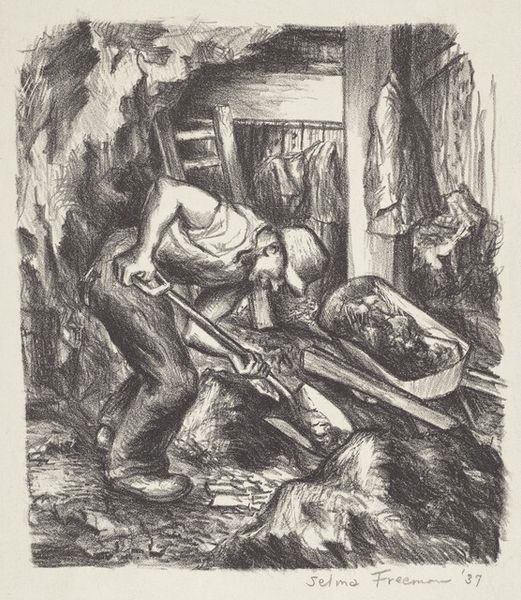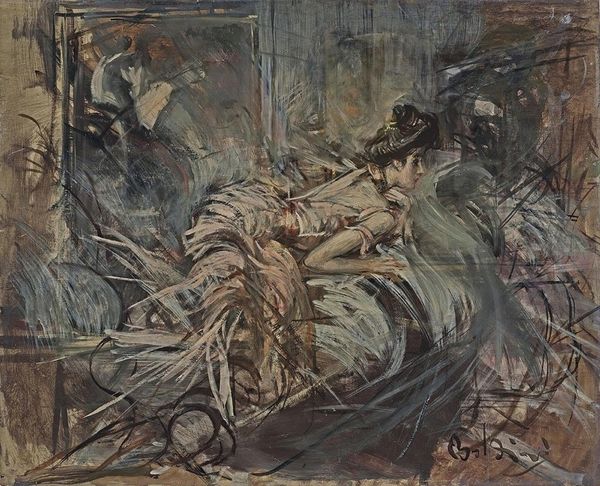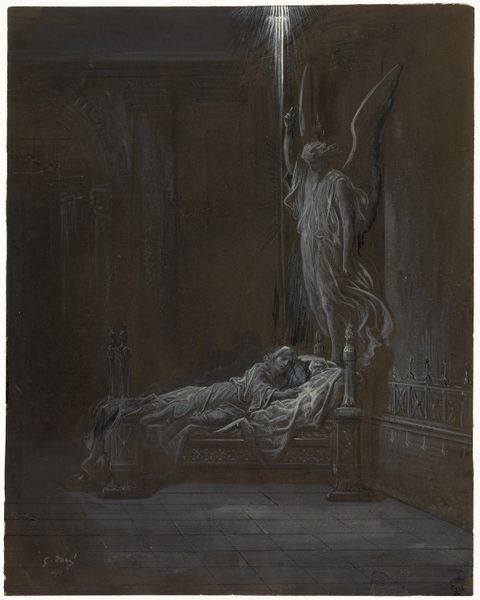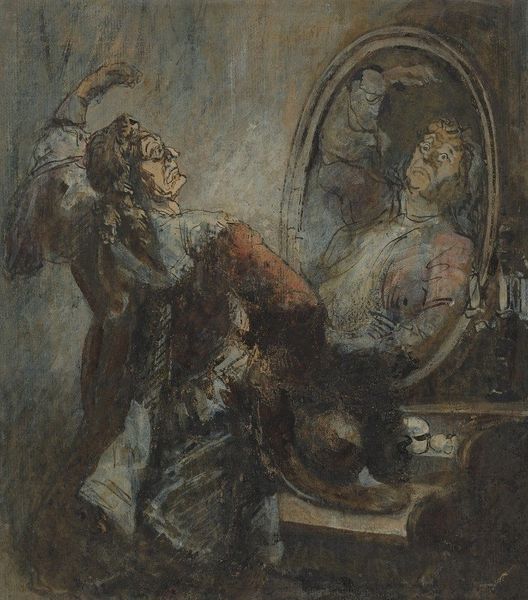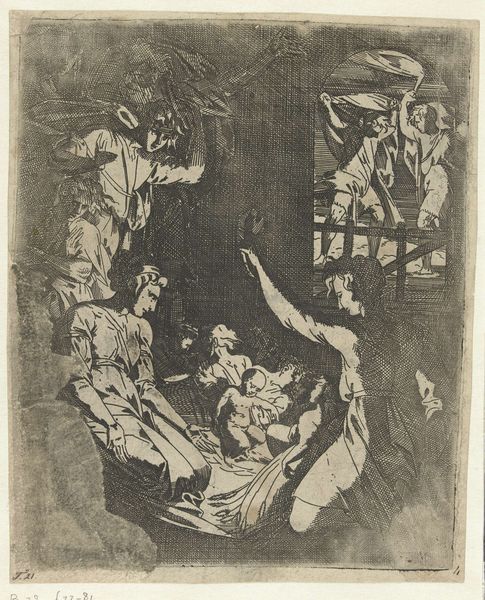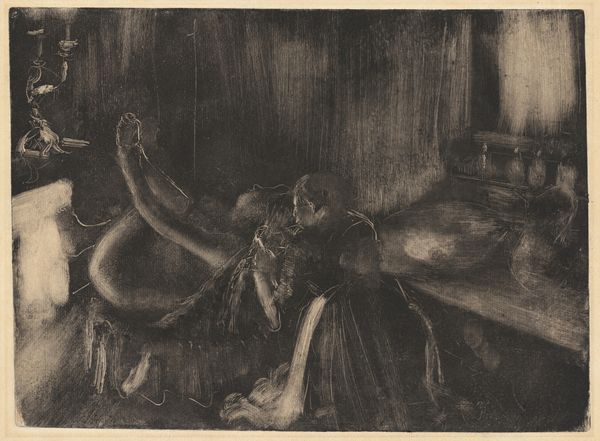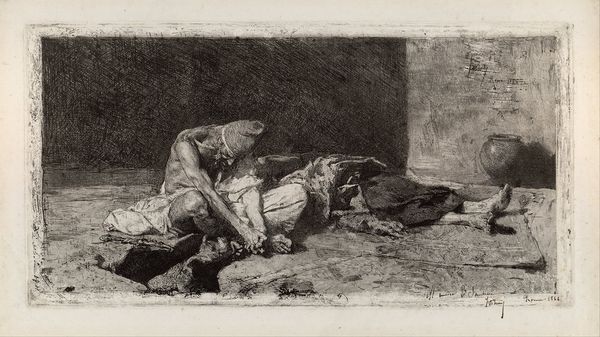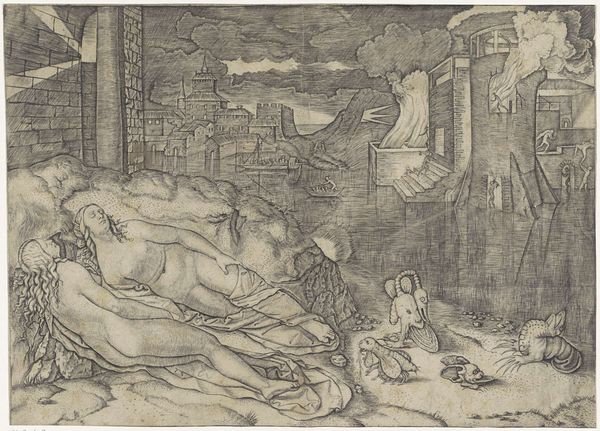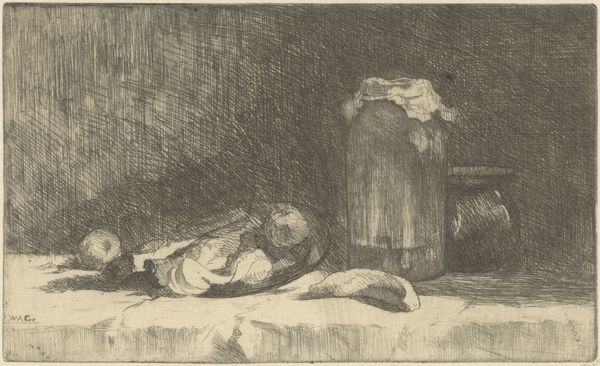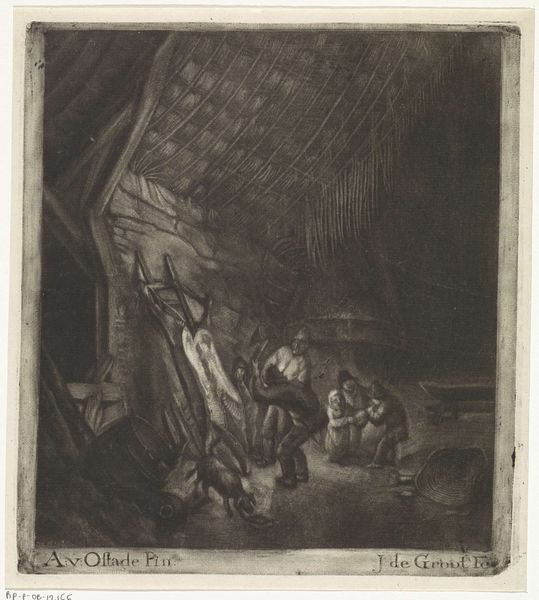
drawing, coloured-pencil, charcoal
#
portrait
#
drawing
#
coloured-pencil
#
narrative-art
#
animal
#
landscape
#
figuration
#
coloured pencil
#
horse
#
genre-painting
#
charcoal
#
realism
Dimensions: height 639 mm, width 529 mm
Copyright: Rijks Museum: Open Domain
Editor: This colored-pencil and charcoal drawing, titled "The Slaughter of Two Horses" by Pieter Dupont, created sometime between 1880 and 1911, presents a rather grim scene. The composition is striking – the stark contrast between the pale and dark horses and the rather brutal realism create a heavy mood. What formal elements stand out to you? Curator: Formally, the most compelling aspect lies in the stark horizontality established by the fallen horses. Dupont’s decision to orient the subjects this way directs our gaze across the picture plane. Notice the diagonal lines of the wooden floor and the gate in the background. How do these opposing lines contribute to the image? Editor: They add a sense of depth, of recession into space, that keeps the scene from feeling flat. But also some tension, a sort of visual disruption. Curator: Precisely. And let's consider the interplay of light and shadow. Dupont utilizes chiaroscuro to sculpt the forms of the horses, particularly focusing our attention on their muscularity even in death. Observe how the rendering of the textures differs from foreground to background. Why might Dupont have done this? Editor: I'm guessing the contrast between the rough textures of the stable and the smooth coats of the horses adds to the drama, intensifying the tragic nature of the event portrayed. Also it might bring more attention to the suffering of the horses and thus induce reflection about its theme. Curator: Yes, the materiality and method converge. Dupont isn't merely representing a scene but also, through careful manipulation of form and line, constructing a narrative about mortality itself. Do you find the realism contributes or detracts from any symbolic reading? Editor: That's fascinating. I came in thinking mostly about the obvious emotional impact but now I appreciate the thought he put into using contrast and texture, to construct a scene that communicates much more than death itself. Curator: Indeed, viewing it as such shows us the artist's awareness of how he's placing forms in relationship to each other, and constructing planes in relationship to one another. We also realize it makes this image much more striking.
Comments
No comments
Be the first to comment and join the conversation on the ultimate creative platform.


